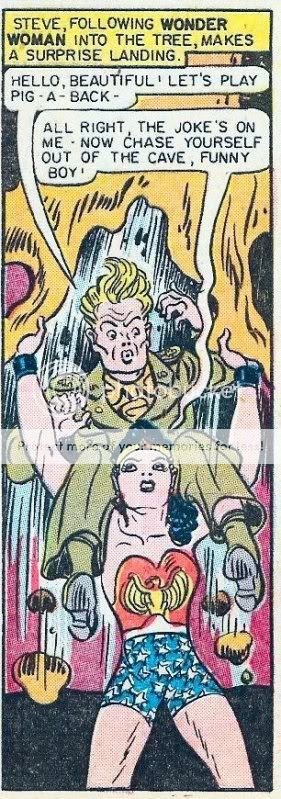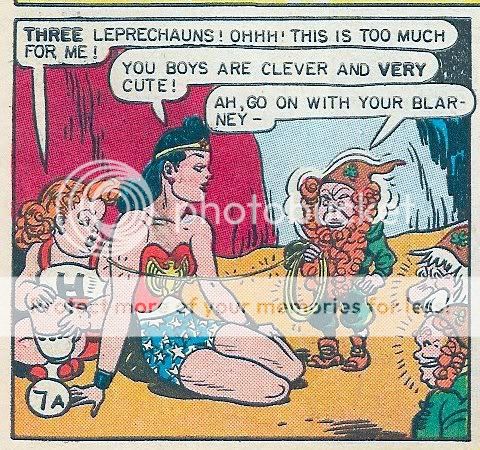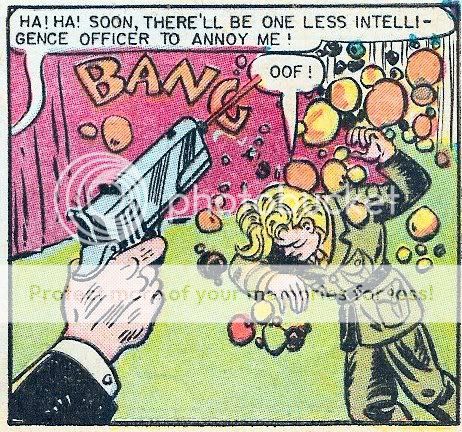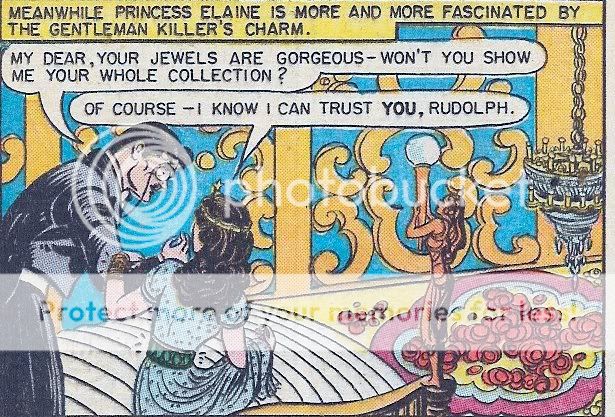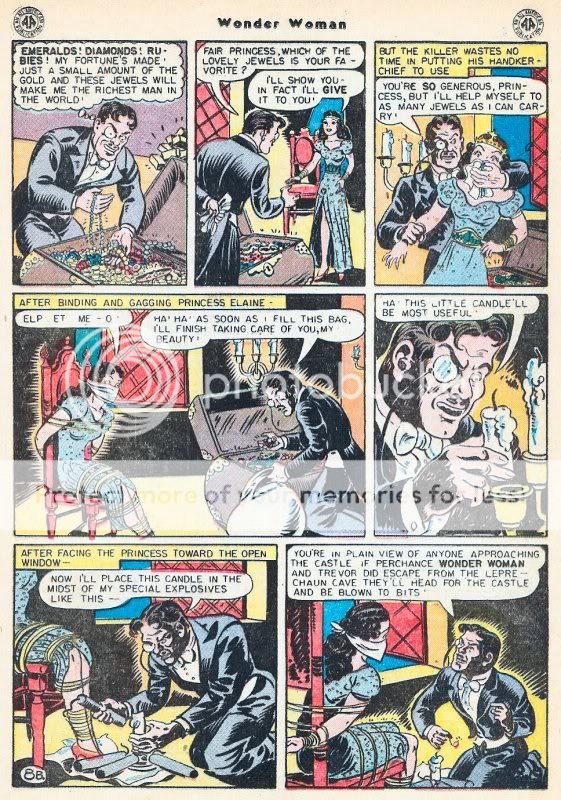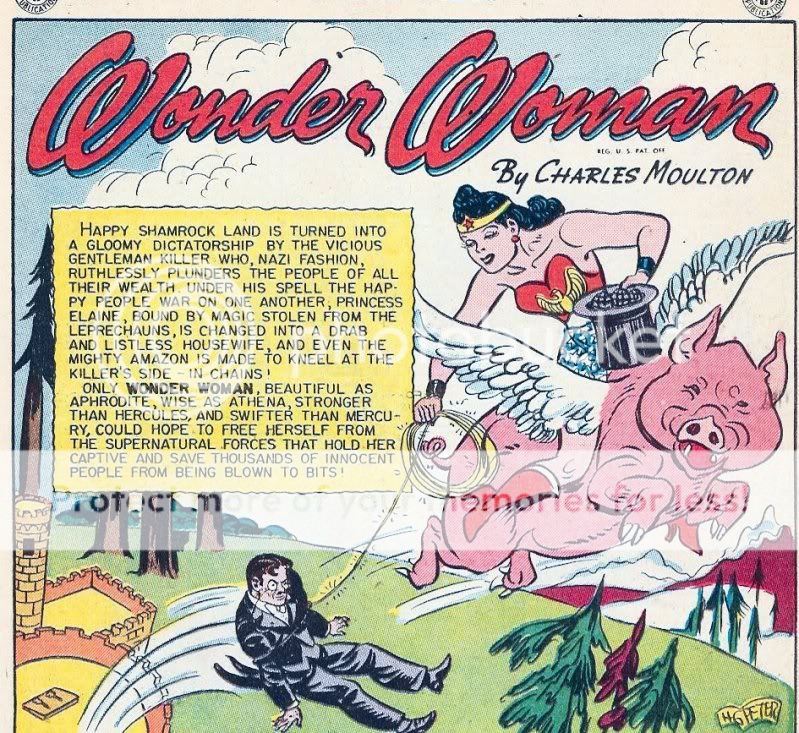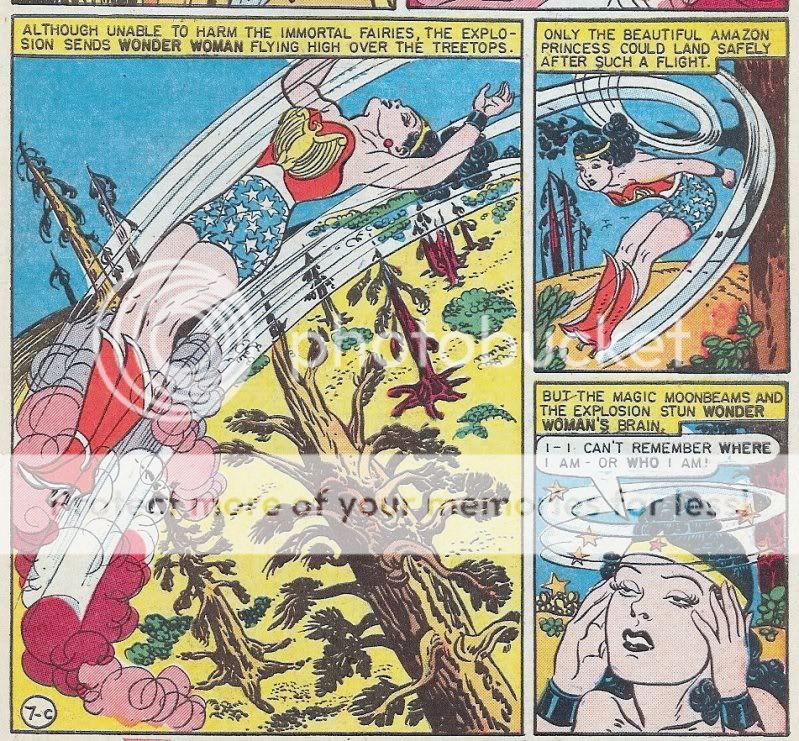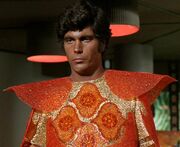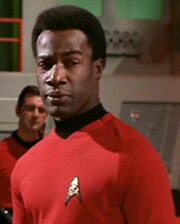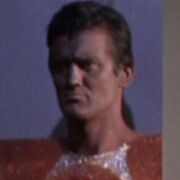A while back there was a large blogosphere feeding frenzy when I (A) expressed dislike of 100 Bullets and (B) mistook Dave Johnson for Eduardo Risso in the course of dissing a cover. Anyway, Dave Johnson himself just found the critique, and stopped by to tell me I’m an idiot. If you share his opinion, or just want to see some trollish bad behavior from various parties, the back and forth starts here.
Monthly Archives: August 2009
Kennedy’s lasting achievement
Bound to Blog: Wonder Woman #14
I’m actually doing a bit of catch-up here; I’ll have at least three and maybe four Bound to Blog posts up this week. Starting with:
Yep, it’s just like the teaser says: Wonder Woman in Shamrock Land. And while I love that cover — complete with bizarre scale variations, weird amorphous clover blob, bright yellow background, and a guy cut off at the waist in the best spirit of constructivist design — the story isn’t maybe as good as it might be. Part of it is the villain— the well-dressed cropped guy on the cover there. He’s called the Gentlemen Villain or something, and he’s so bland that I can’t even remember his name even though I just read the thing. He performs all the usual Marston villainy (forcing women to serve him, throwing around grenades — Marston loves grenades) but it feels pretty rote — perhaps in part because it’s mostly just in the interest of stealing stuff. I’ve seen some writing on this series that’s suggested that Marston was freed up by the end of the war…but there’s definitely something to be said for evil Nazis as enemies.
Or, you know, maybe Marston just wasn’t feeling all that inspired. Or maybe leprechauns just don’t hold that much appeal for me. I don’t know. I even felt like a lot fo the art wasn’t really all that exciting, especially compared to Peter’s ravishing work last issue.
Not that the book doesn’t have its moments. This is a great panel.
Marston definitely joins R. Crumb in having a thing for piggy-back rides. I assume it’s the masochistic implications that make it appealing for both of them; getting a piggyback is infantilizing and polymorphously (rather than explicitly sexually) intimate. WW emphasizes the mother/child aspect by calling him “funny boy” too. Their expressions are both priceless; Steve looks like his eyebrows are going to attain independent lift-off, and WW looks genuinely cranky.
Here’s a queasy moment as WW flirts with a leprechaun who has captured her:
Ick.
I like the fact that this looks more like Steve is being showered with bubbles than like he’s being buried alive:
I love the scribbly halo of WW’s lasso in this one:
And here’s the valentine day’s card. Steve has an opportunity to make WW kiss him since she’s trussed up in the lasso…and oh, she wishes he would…but he’s just too galant. It’s both romantic and fetishistic, innocent and winkingly kinky, in a way that reminds me of a certain amount of shojo:
This is a bizarre bit: are the Irish especially well known for throwing bricks? Or is this just something Marston made up?
And this is probably the best panel in the issue; I love the designs on the wall there, and the way the Princess Elaine looks impossibly diminutive. The white curved lines of the couch are really nice too; the ones to the right of Elaine almost seem like motion lines, actualy, giving the whole panel a sort of fantastical energy and motion.
The enormous bee as design element here is pretty great:
And the weird inky shadows here are very nicely done; it gives it almost a noirish feel, which is unusual for Peter (I wonder if he used a different assistant on this one or something?)
Oh, man, I’d almost forgotten the flying pigs. That pig looks so happy….
Men! They hate roses and make you sew!
Also… this is an oddly suggestive panel.
The way WW is arched with her arms thorwn back, and the energizing effects of the motion lines… And then you’ve got those weird veiny, phallic trees beneath her — we’ve definitely wandered out of Leprechaunland for a moment and into a Freudian dreamscape. And, of course, in the next panel, the excess of passion has given her amnesia. (I can’t actually remember if she’s gotten amnesia before, but it seems like a natural kink for Marston, fitting in nicely with the mind control and the dominance (fetishizing the obliteration of personality and the sense of control.))
So yeah, there’s a lot of individual things that work great; just overall it doesn’t quite fit together as well as it might. Thinking about it a little more, I think that maybe the Irish mythology just isn’t as well integrated as the Greek myths he sometimes uses, or as the more fantastic mole men or seal men or whatever settings. He seems to mostly see the Irish myths as an opportuniy for slapstick, maybe; in any case, it doesn’t jibe with his cosmic gender interests the way Mars and Venus and so forth do. The loss of the war setting also makes the whole thing seem a little directionless; instead of an epic battle between good and evil, it’s just some thieving schmo wandering around doing bad. I think the WW run really benefits from having the contrast between Marston’s set-in-stone binary crankitude and his scattershot, anything goes scripting (much the way that Peter’s art has a tension between extreme stiffness and extreme fluidity.) Marston’s ideology is certainly still present here (there’s a lot of mention of loving submission,) but it never solidifies thematically the way it does in many of the issues. But so it goes; they can’t all be gems, I guess. Hopefully Marston and Peter’ll be back on their game next issue.
Wiki Trek: “Elaan of Troyius”
Some production facts from Mem Alpha, just because they interest me:
… Similarly to “The Corbomite Maneuver“, this episode was filmed early in the season, but aired much later because of the many, newly created special effect shots which took lot of time to be filmed and added in post-production.
… more costume changes than any other TOS character with the exception of Barbara Anderson (Lenore Karidian) in “The Conscience of the King.” Guest star France Nuyen’s costumes are far more revealing, however: the purple halter top, the silver flowered thing on black mesh, the orange dress, and the blue wedding gown with no sides.
This episode marks the first appearance of the Matt Jefferies-designed Klingon ship ... The new emblem of the Klingon Empire is seen on the model …
War vessel. Like people say, Matt Jefferies did great work. He designed the Enterprise and the bridge, both of which are magnificent, then followed himself with the Klingons’ war ship, also a triumph. The ship is oddly beautiful: kind of scary and off looking, like an alien warship should be, but in subtle ways, and at the same time it draws the eye: the ship is uncomfortable to look at but also pleasing to look at. I think it outclasses everything else about the old-series Klingons: the make-up, the dumb names (“Klingon” itself is kind of dumb). In fact I’d say it was better than the show’s Vulcan stuff, even better than Mr. Spock’s ears. The Klingon ship is old Star Trek‘s best go at representing alienness, a pretty fundamental mission for the series.
Shatner’s enemy. MemAlpha mentioned France Nuyen‘s outfits. She was born 1939, Marseilles; original name: France-Nguyen Van-Nga. The wig is copied off the cover painting of a science fiction magazine from a good ways back.
Per Wiki, Nuyen’s father was Vietnamese, mother was a French gypsy. When she was a teen somebody photographed her on the beach and she became a starlet.
In 1958 Nuyen and Bill Shatner starred in the Broadway adaptation of a hit novel, The World of Suzie Wong. Shatner says the play was sold out for months in advance because of mass theater parties booked from out of town. He claims that the result was a disaster because Nuyen was incompetent and impossible, a temperamental brat, somebody who couldn’t be trusted even to deliver her lines or do what the stage directions said.
The play would just fall apart, night after night, and Shatner had to stay alive up there somehow. So he began bending his lines; he twisted their delivery, sent the emphasis where it wasn’t expected. That way he could give the audience something to pay attention to. This is the origin story for the famous Shatner delivery, the crosswire rat-a-tat-tat everyone parodies. (“Man … was meant … to try,” and on “to” his voice goes up, and on “try” it goes down, throws the word away.) He learned those tricks so he could survive France Nuyen. Sources: Up Till Now and Neal Pollack’s comments during Shatner’s Comedy Central roast, though I don’t advise watching the roast unless you’re some kind of moron. ( update, Not Neal Pollack. It was Kevin Pollak. )
Ambassador, others. The green ambassador (Petri), b. 1930, NYC. Wiki says he did a lot of “summer stock and repertory companies,” then Shakespeare on Broadway, first movie was The Robe (1953), played Caligula.
Black redshirt. He has a couple of lines, pops up in a couple of scenes, though he doesn’t get to do anything useful. Was also Greg Morris’s stunt double on Mission: Impossible.
He was the guy in the Swamp Thing costume in Swamp Thing, The Return of Swamp Thing, and the Swamp Thing tv series. Mem Apha mentions movie credits in ’70s, ’80s, ’90s, in most cases decently budgeted films.
Only known appearance: The other alien bodyguard, another soul killed by Star Trek‘s wig deptartment:
Strange encounter
Easy laugh
I told Griffy, my building’s janitor, that traditional Chinese medicine abhors masturbation on the grounds that the practice drains yang without an influx of yin (I think).
You talking about Chappaquidick, son?
He would be a very fortunate man if his heroic last few months were what future generations remember him most for.


